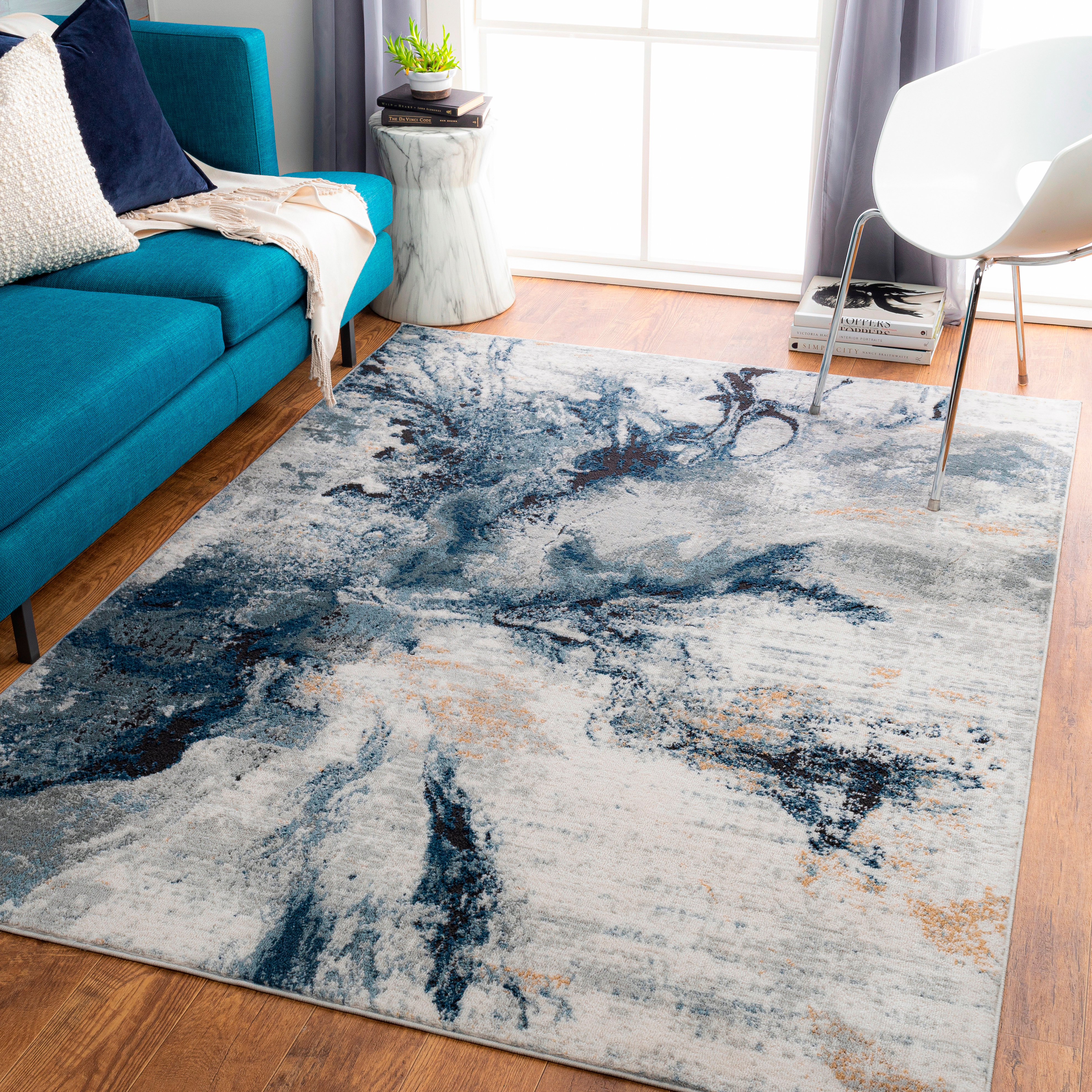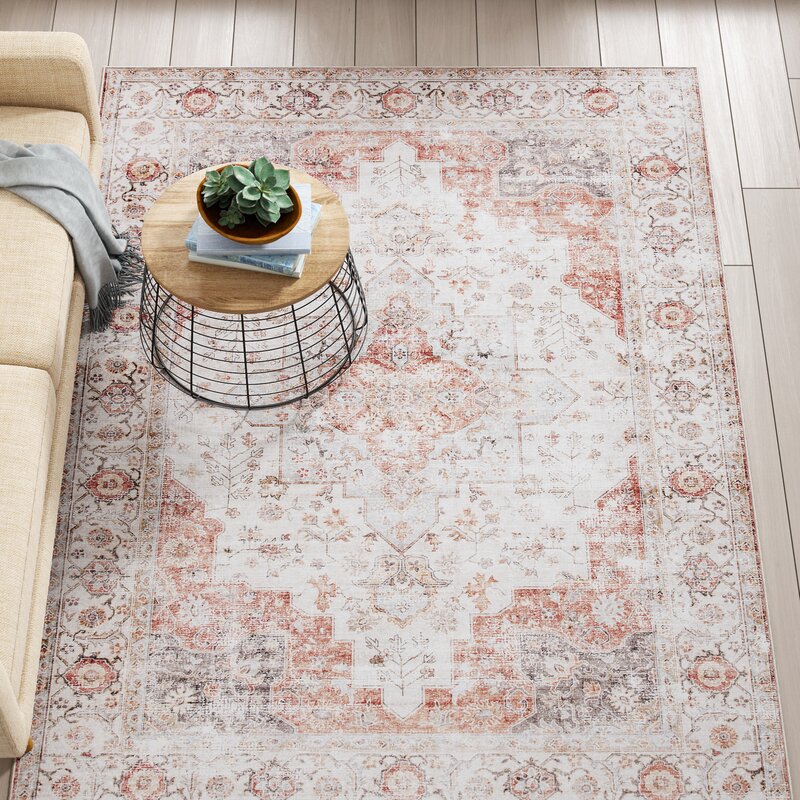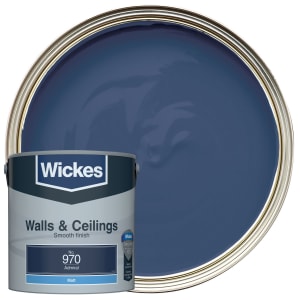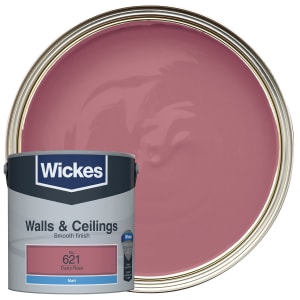Are you following these 6 golden rules for the perfect living room design?
Your living room design needs to be comfortable, practical and stylish. But what are the main areas to focus on to create a warm and welcoming space? We breakdown the process so you can get it right
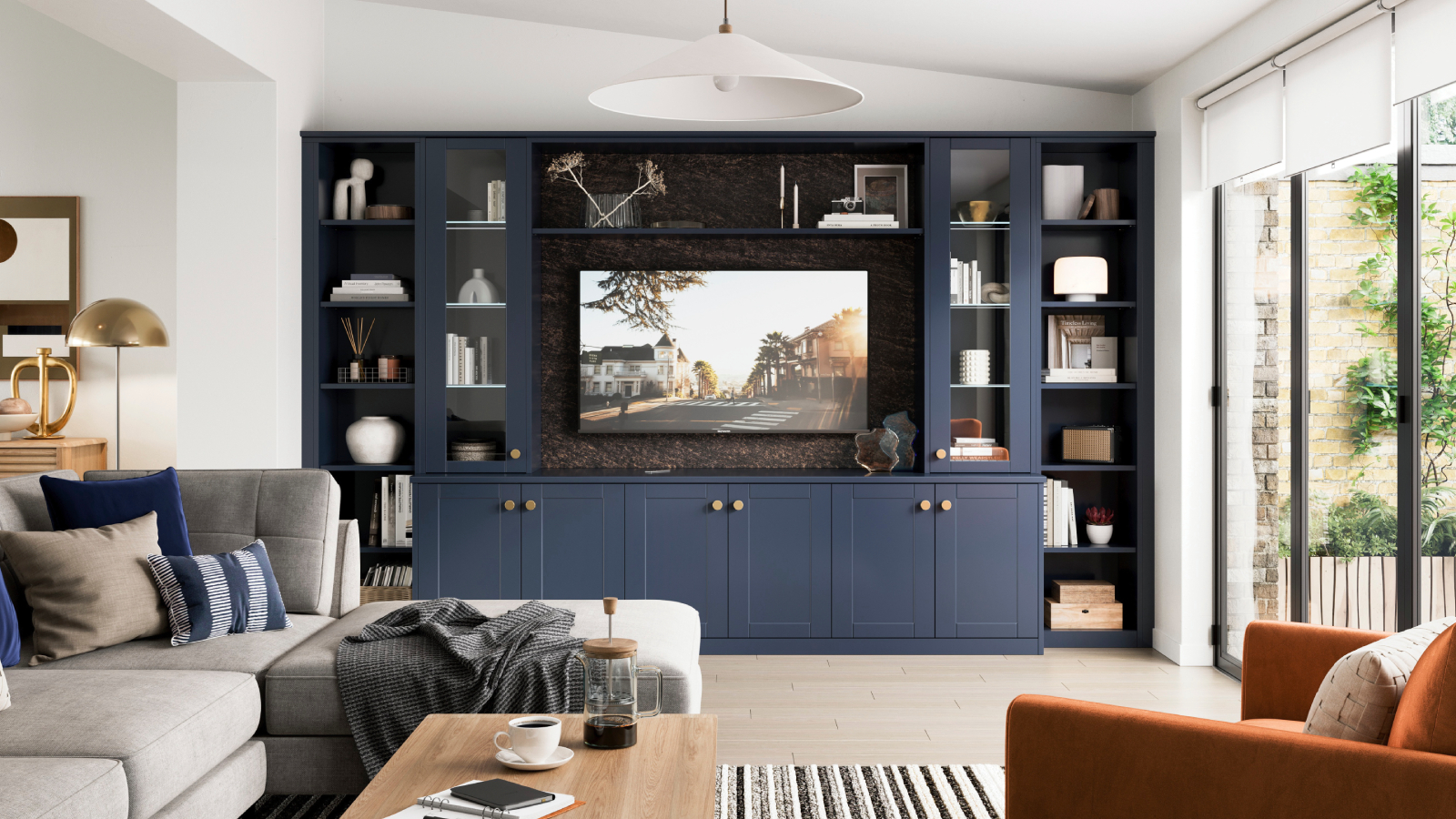
- 1. Define who and how you will use the space
- 2. Let the practical features of the space help define your layout
- 3. Think about your lighting early on
- 4. Choose the right colours for your living room design
- 5. Pick flooring that is practical but elevates the overall design
- 6. Select your furniture and storage carefully
- FAQs
Whether your new living room is small, large or somewhere in-between, getting your living room design right is key. Aside from the kitchen, it's one of the rooms in your house that often encapsulates the heart of your home.
From relaxing with family to entertaining friends, it also needs to be able to fulfil a number of different needs. So, how do you get your living room design right and create a showroom worthy space that's still inviting?
We asked a number of interior designers and experts in the know, what are the key steps to getting your living room design right and how, as homeowners, can we tackle them to get the best results?
1. Define who and how you will use the space
When starting the process of designing your living room, the first important step is to put people front and centre, says Emma Deterding, founder and creative director of Kelling Designs.
"Consider who's going to use the space, how they're going to use it and plan your design around this," recommends Emma. "For instance, will the room just be used for relaxing and watching your favourite box set, or do you need to include a workspace? This will enable you to make easier decisions on elements like the size of sofa, other upholstery pieces such as armchairs and ottomans, as well as storage furniture."
Take the time to really think about how you will be using the space and which members of the household will spend the most time in there to make sure your living room ideas will suit everyone. Some valuable questions to ask yourself are:
- Will it be a mainly adult space, or is it a room to be enjoyed by the whole family?
- Will you be using the room for entertaining guests?
- What kind of feel do you want the space to have? Relaxed, vibrant, welcoming?
- What activities will be going on in the room? Watching television, playing games, working from home, playtime for young children, or as a dual solution for your gaming room ideas?
- Do you need open plan living room ideas with sightlines from the kitchen for example, or will your room purely be used for one purpose?
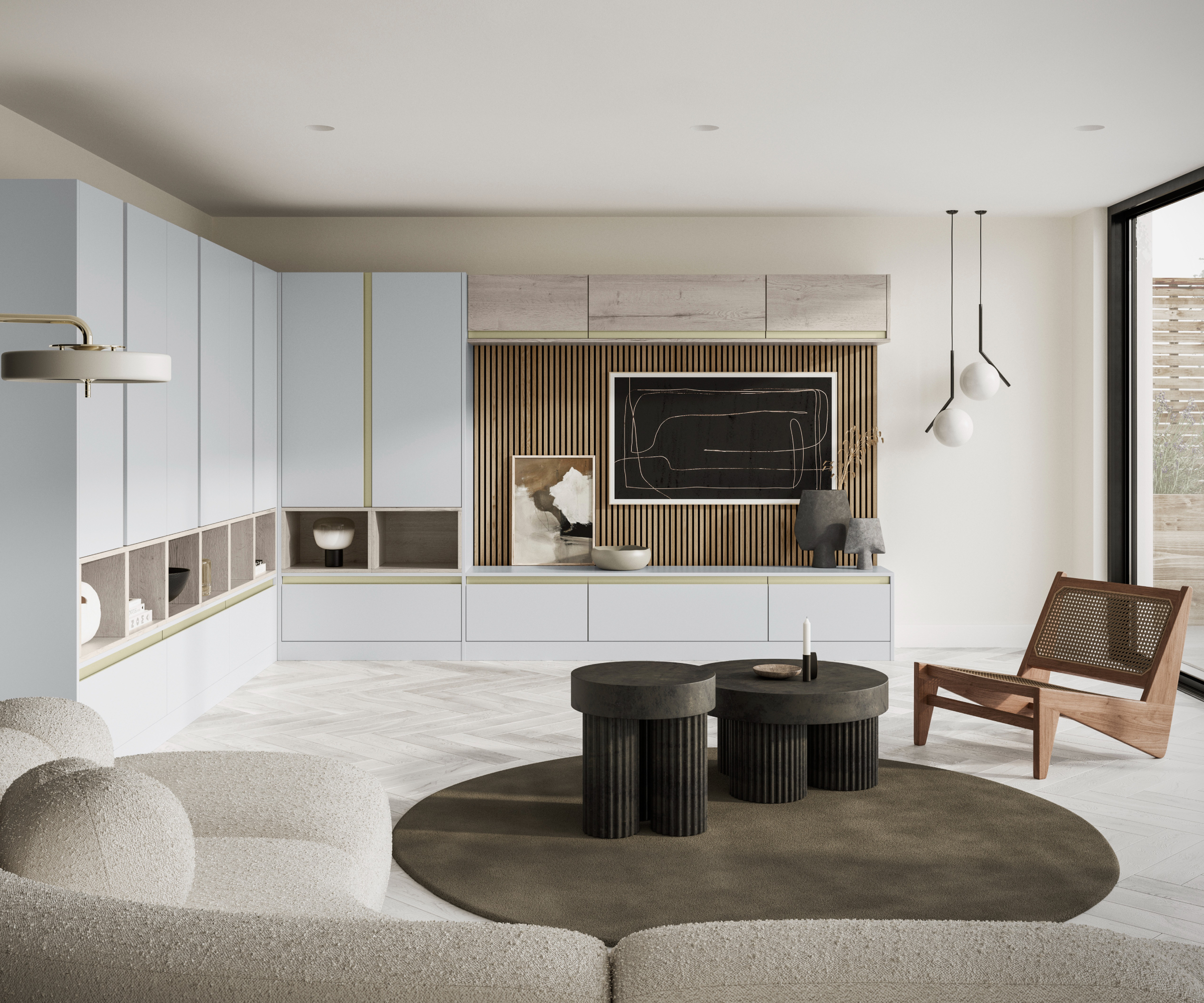
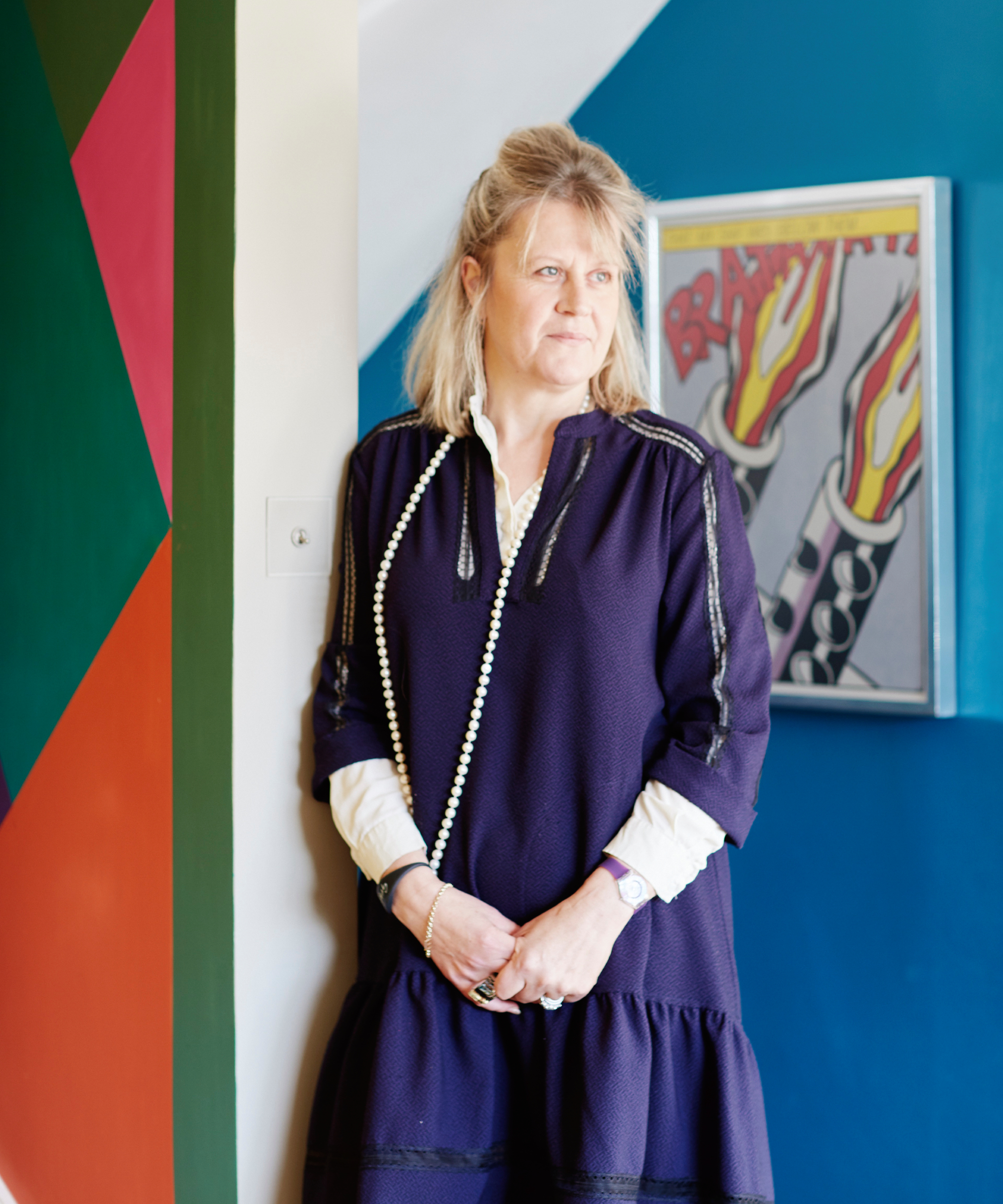
Emma Deterding is a leading interior designer who has been named among the top 100 in the world. With over twenty-five years of experience, Emma has honed her ability to offer well thought-out schemes that turn her clients' homes into beautifully designed and practical places.
2. Let the practical features of the space help define your layout
Once you've established who will need to benefit from the right living room design, if you're renovating a house, it's time to bring your attention to the room itself, taking a long look at its architectural features, its size, shape and any restrictions such as sloping ceilings. On the other hand, if you're working with an architect to design a new living room extension or self build, you'll have more opportunity to control the basic shell of your living room design.
Once you've considered ceiling height, size and features such as alcoves or chimney breasts, you can then begin to figure out spatially how you will make your living room layout match your needs.
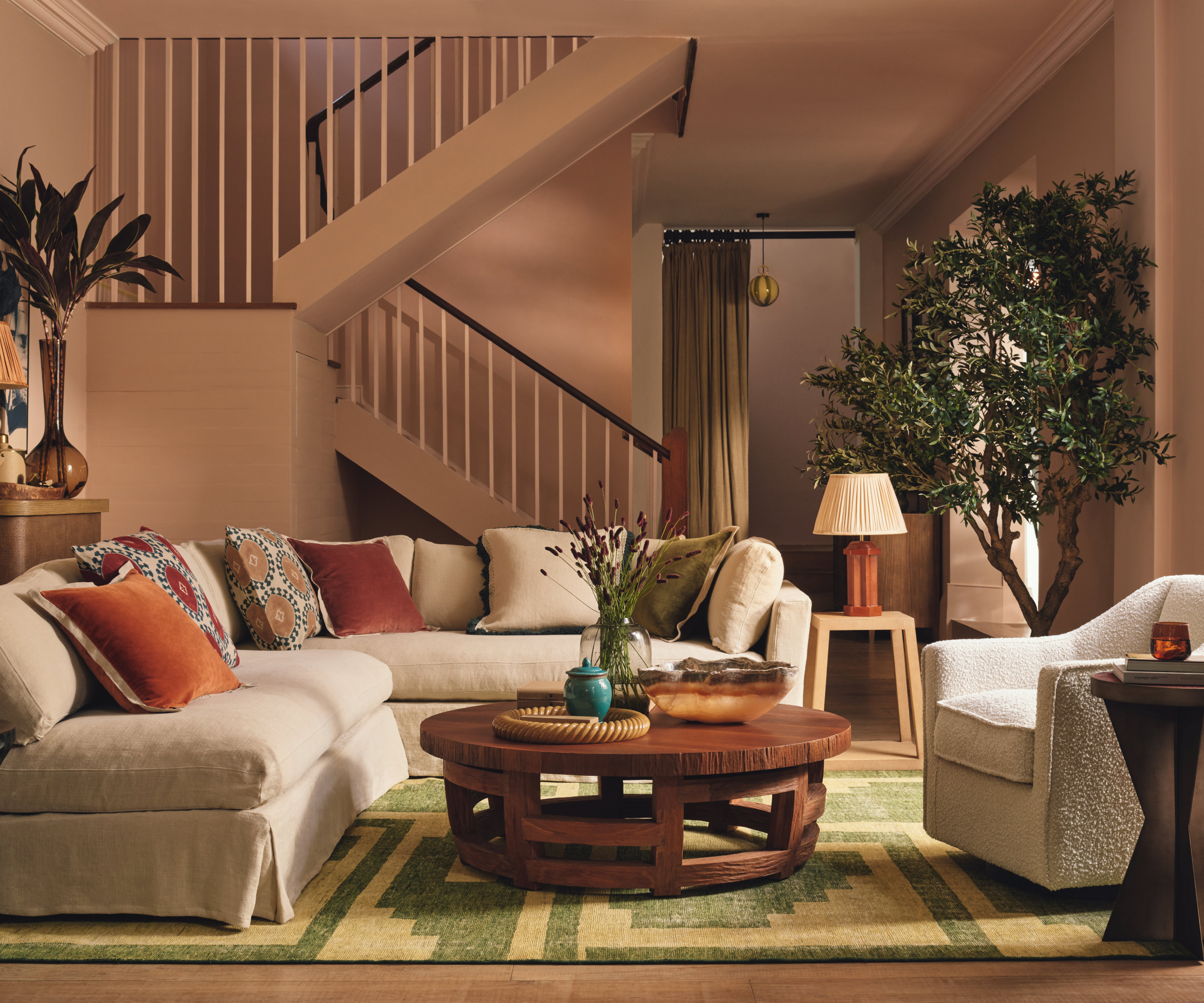
Getting your living room layout right
"Your living room layout is paramount to creating a natural flow and ensuring balance between seating, focal points, and circulation," says Kunal Trehan, interior designer and founder of Touched Interiors.
This can be particularly important in awkwardly shaped rooms – such as those that are long and narrow – as well as in small spaces and those that are very large. "You need to ensure the furniture arrangements are set up for comfort and to encourage conversation," says Emma Deterding.
But how?
"It’s always good to pick out a focal point - whether it’s a fireplace, statement artwork or the TV," suggests Emma. "Once you’ve figured this out, you can start to lay your seating out to complement it and make the most of it."
Not sure how to work out your living room layout ideas? Emma shares her top tip for figuring out what you can and can't do.
"Whilst the room is empty, laying newspaper to mimic the size of the furniture pieces you're looking to put in will help you visualise just how much room everything will take. It'll also help you make important decisions about size and scale of big pieces and whether the room will feel spacious or restricted."
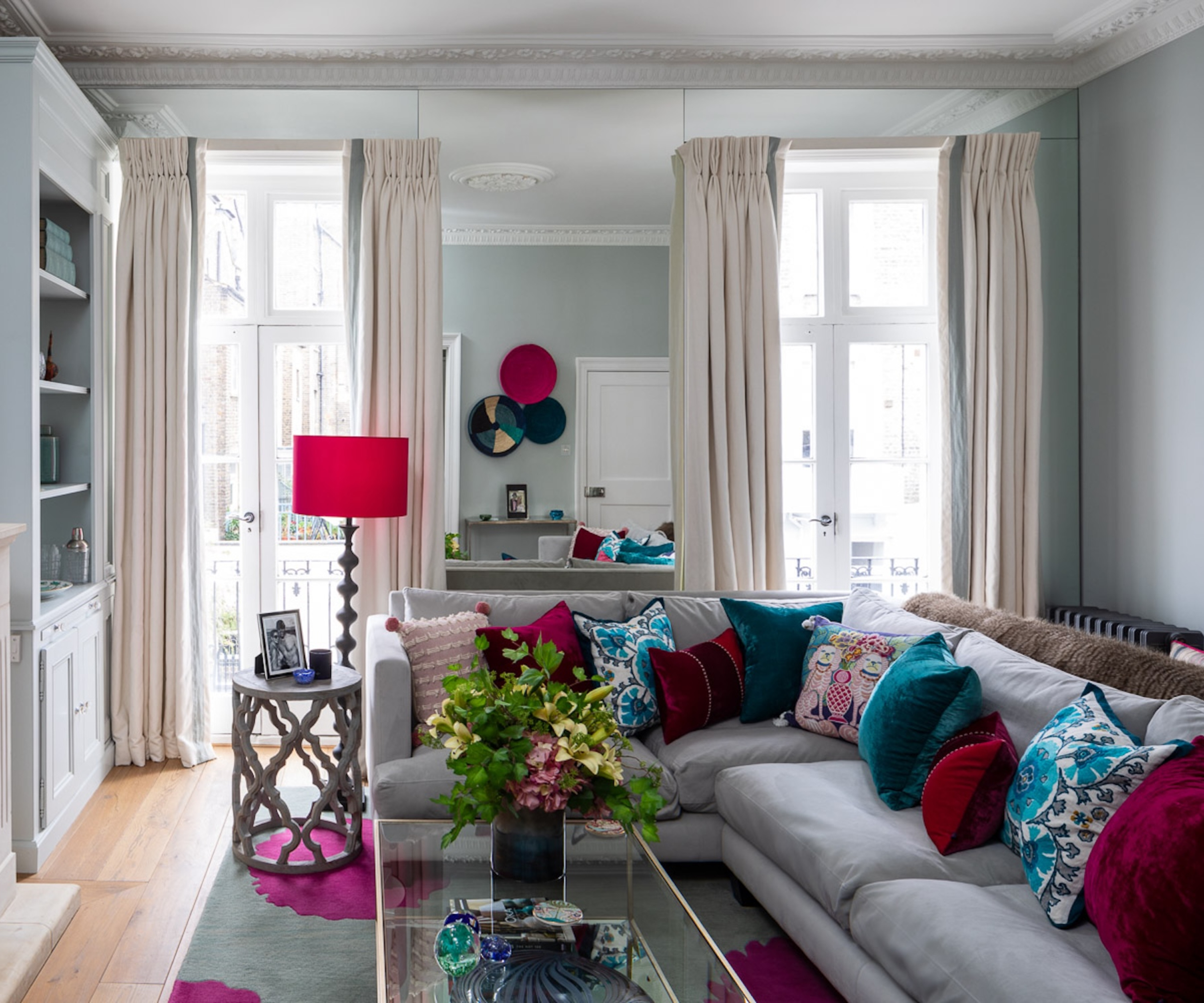
In small living room ideas, a symmetrical layout can work well, keeping the space feeling uncluttered and neat. Using two matching sofas with a central coffee table is the ideal way to get the look. Bear in mind that the best distance between a sofa and table is 14 to 18 inches and do think about how much space you need to manoeuvre around various items of furniture.
Even in larger spaces getting the layout wrong is still possible, and without the right approach to your living room design can leave you with a cavernous room that feels cold and unwelcoming. The answer? Approach your layout by creating zones.
"Zoning an open-plan living space is all about defining areas through furniture arrangement, rugs, and lighting," explains Kunal Trehan. "A statement sofa or console table can subtly divide a lounge area from a dining space, while different ceiling treatments or floor finishes add further distinction.
"To make a large living room feel more intimate, break up the space with layered lighting, textured fabrics, and strategic oversized furniture placement," he continues. "Use rugs to define seating areas, incorporate plush upholstery, and add depth with warm tones and rich materials like velvet or bouclé. Floor lamps, soft drapery, and a mix of decorative objects create warmth and personality."
"Try and choose furniture pieces that are in proportion to the size of the room too," adds Emma Deterding, "as small pieces of furniture will look lost in the space.
"A corner or curved sofa or opting two three-seat sofas facing each other can help to define a main seating area, giving it a sense of enclosement, whilst a pair of armchairs sat in the window with a side table will help create a conversation or reading corner."
Whatever your approach, remember that the living room needs to feel welcoming and warm. Foster a sense of togetherness by ensuring seating is set out in such a way that people can face each other comfortably.
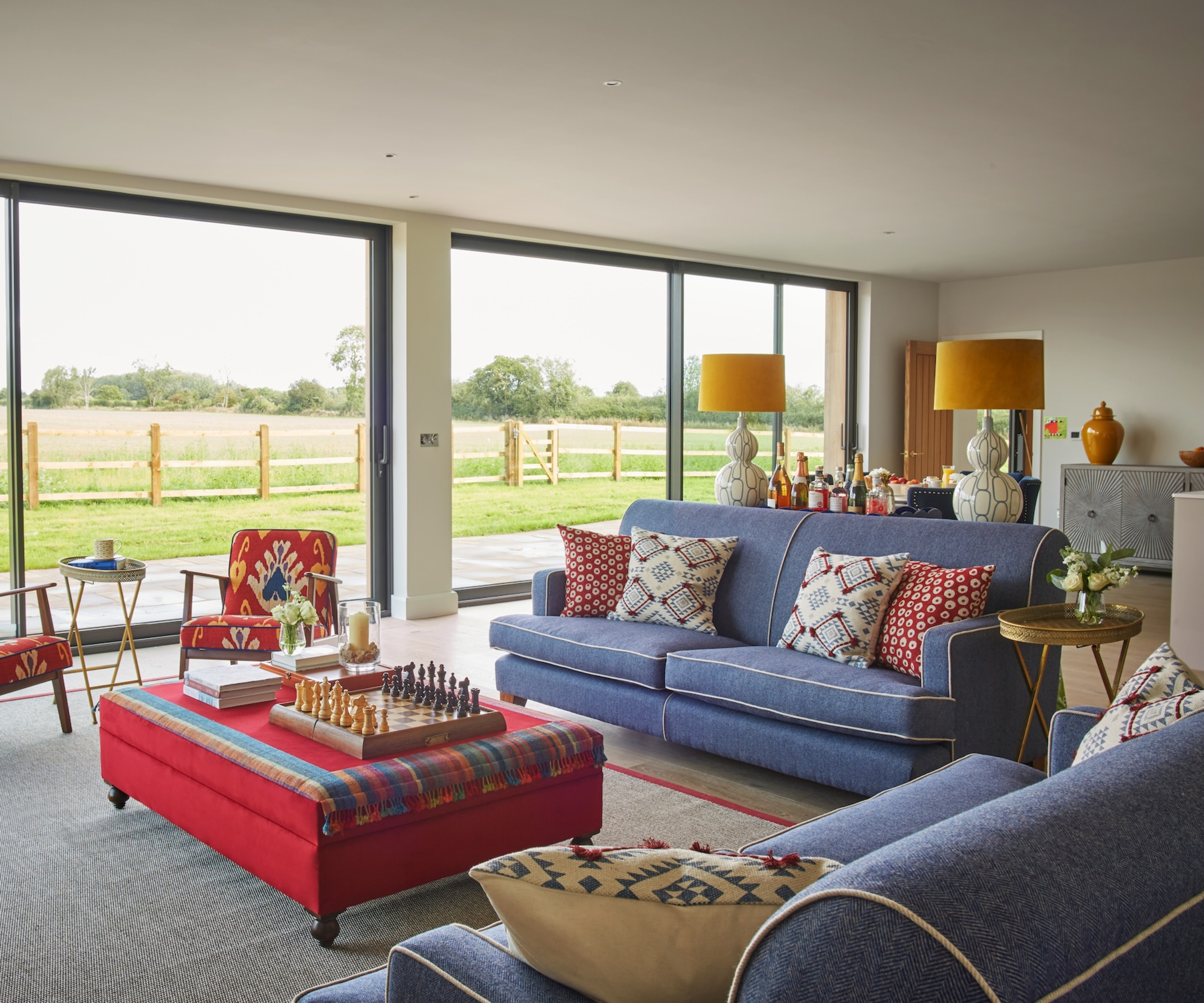

Kunal Trehan is a distinguished luxury interior designer and the visionary behind Touched Interiors, a multi-award-winning design studio renowned for crafting exceptional high-end residential designs. With an uncompromising commitment to excellence, Kunal is celebrated for his ability to curate interiors that seamlessly blend innovation, craftsmanship, and refined opulence - setting new benchmarks in luxury design. He also built and designed his own home, so has extensive experience in house design and architecture.
Try these rugs for zoning in a larger living room design
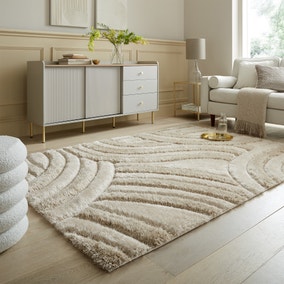
A luxurious, soft and textured rug perfect for adding interest in neutral living room ideas
3. Think about your lighting early on
Your living room lighting ideas will form an important part in both the way your living room feels as well as how you can use it, and it's something that needs to be considered early on, once you've established your basic layout.
"Layering lighting in your living room will create a more flexible lighting scheme," says Luke Thomas, design director at John Cullen Lighting. "Consider positioning LED downlights that are angled towards curtains, artwork and any joinery so that the reflected light comes back into the room, enhancing the feeling of space.
"Always try and avoid a grid of downlights as this makes a room look flat and dull," continues Luke. "It is important to create focus within any room. Quite often the simplest way to achieve this in a living room is to pinpoint a coffee table or decorative object with a narrow beam of light."
Luke also suggests using lighting to bring the features within the room to life. "Consider lighting joinery and shelving to highlight books or objects. This can be done in a number of ways: highlighting specific items with a miniature downlight or using a linear LED strip concealed within the depth of the shelf for an even glow at the front of the shelf, or used at the back for a dramatic back light effect. Discreet low glare uplights can add a magical touch to window reveals, fireplaces and architectural details."
For maximum control over the mood of the room, look to the type of lighting controls you fit is another valuable piece of advice from the experts.
"Using lighting controls so that each effect can be individually controlled separately is the key to setting the mood," advises Luke. "At a minimum add dimmer switches so you can manipulate the light levels. If budget allows, a pre-set system is ideal, as at the touch of a button the lighting will readjust to the pre-set setting to suit the mood and time of day."
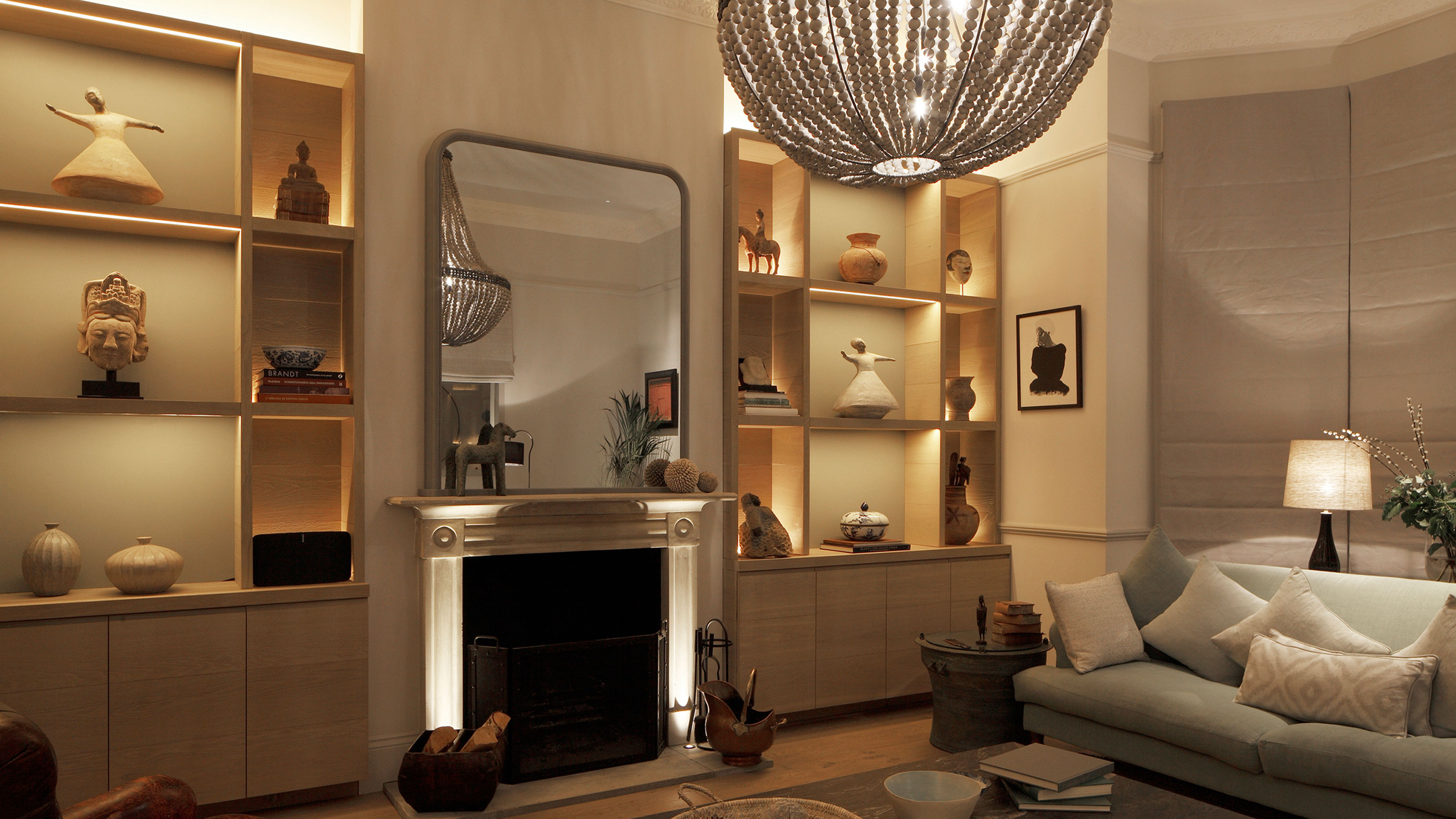

Luke Thomas, Design Director at John Cullen Lighting, has over 15 years' experience creating design-led lighting solutions. He collaborates with top designers, architects, and clients on diverse projects, from mansions to Scottish castles.
4. Choose the right colours for your living room design
The shades you choose for your walls and ceilings in the living room will really set the tone for the whole space and have the power to completely transform the way it feels.
Whether you choose to paint or paper the walls or like the idea of using wall panelling ideas, the shades you use need to be carefully considered as you want to make sure your final choice is the best colour for a living room.
In essence, "the best colours for a living room depend on the desired ambience," says Kunal Trehan. "Neutral palettes with warm earthy tones, taupes, or soft whites create a timeless and sophisticated foundation. Deeper hues like rich navy and emerald, green add depth and drama, while subtle pastels can enhance light and openness. Always consider natural light and architectural features when selecting tones."
"Colour is a big part of setting the mood in the space," agrees Emma Deterding. "Lighter shades will help to make the living room feel bright and diary, whilst deeper, richer tones will create a warm and intimate atmosphere.
"Warm neutrals such as taupes, beiges and soft browns offer a timeless and versatile backdrop, making it easy to introduce bold pops of colour and pattern through your accessories - this is especially great if you’re slightly afraid of using bold colour and pattern.
"Earthy tones like terracottas, olive greens and deep blues help to create a cocooning feel that bring a touch of nature indoors, whilst pastel shades such as powder blues and blush pinks bring a sophisticated charm and lots of character," she adds. "For those who are braver with their design choices, then rich jewel tones like emerald greens, ruby reds or deep sapphire blues can bring in all the personality without overpowering the room. It’s about striking the all-important balance, bringing in lighter and brighter pops of colour to add balance and to draw the eyes around the space."
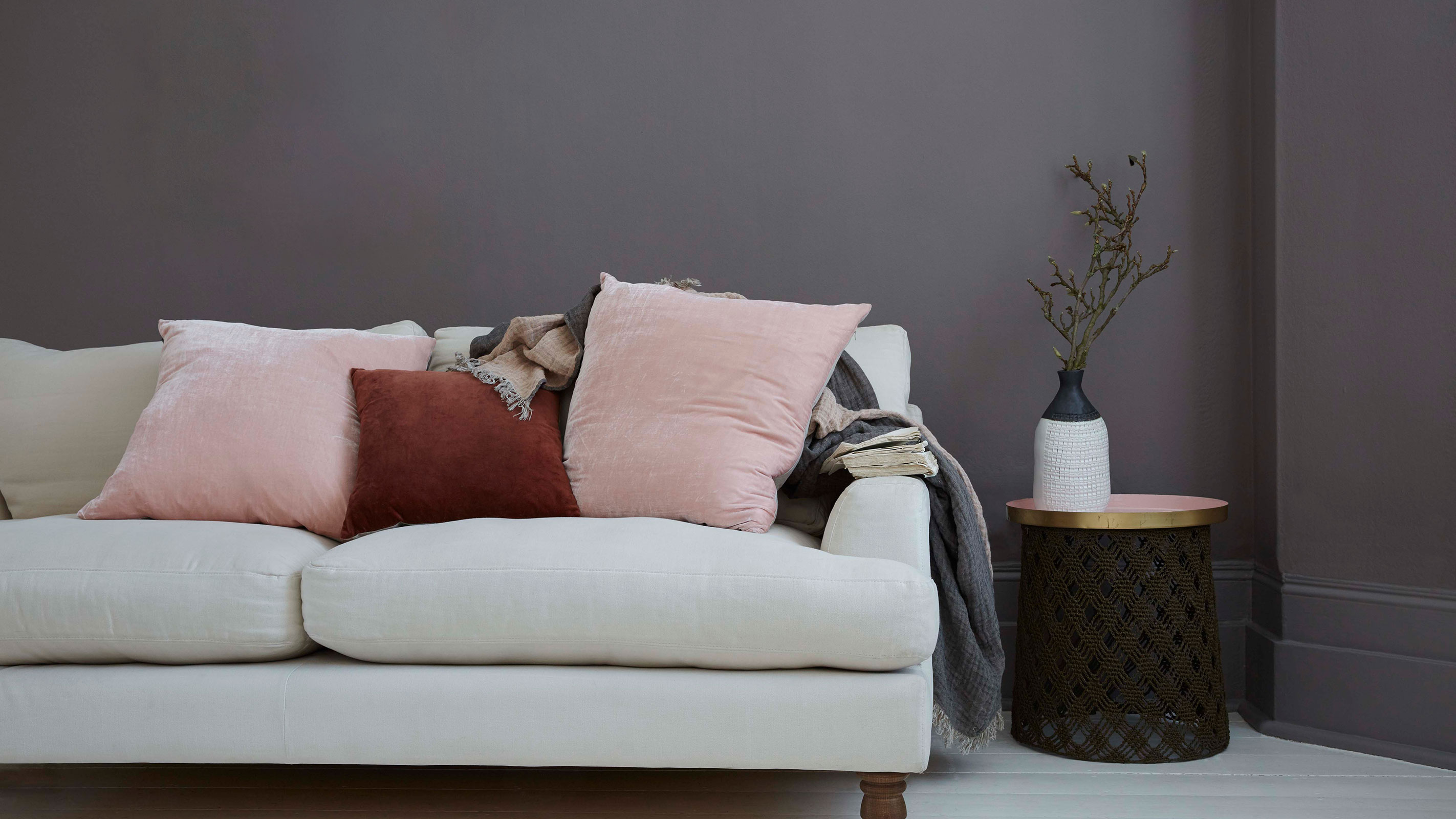
Don't forget to consider more practical elements when choosing your living room colours too
"Make sure you choose your paint colour in tones that are right for the orientation of your room," advises Cathryn Sanders, commercial manager at Earthborn. "North and east facing rooms will benefit from warmer shades compared to south or west facing living rooms. Then decide whether you want to create a bright and airy space, a bold statement or a dark and cosy room, as this will also impact your colour choices.
"If any room in the home can take a deep shade, it’s a living room," continues Cathryn, "but if the thought of painting the whole room in a dark colour feels a bit too much, introduce it in small areas like alcoves or table legs for a subtle effect. Alternatively, another way to add colour to a living room is by painting just the lower walls. You could opt for a paler colour on the top half of the walls and a darker colour at the bottom – ideal for disguising scuffs and marks in these busy areas.
"Using panelling or painting woodwork in a complimentary hue also helps to add subtle texture to the space so it doesn’t look bland," adds Cathryn. "If you’re just wanting to do a quick update, consider selecting a wall that you want to highlight in a room, for example a picture gallery wall. Feature walls can simply be painted a different colour from the rest of the room and this is an easy way of updating your living room without much time or effort."
"If your living room has lots of natural light, you can also consider going a bit darker with your colour scheme and play with busier floral wallpapers," suggests Chelsea Clark, head of brand at Lucie Annabel.
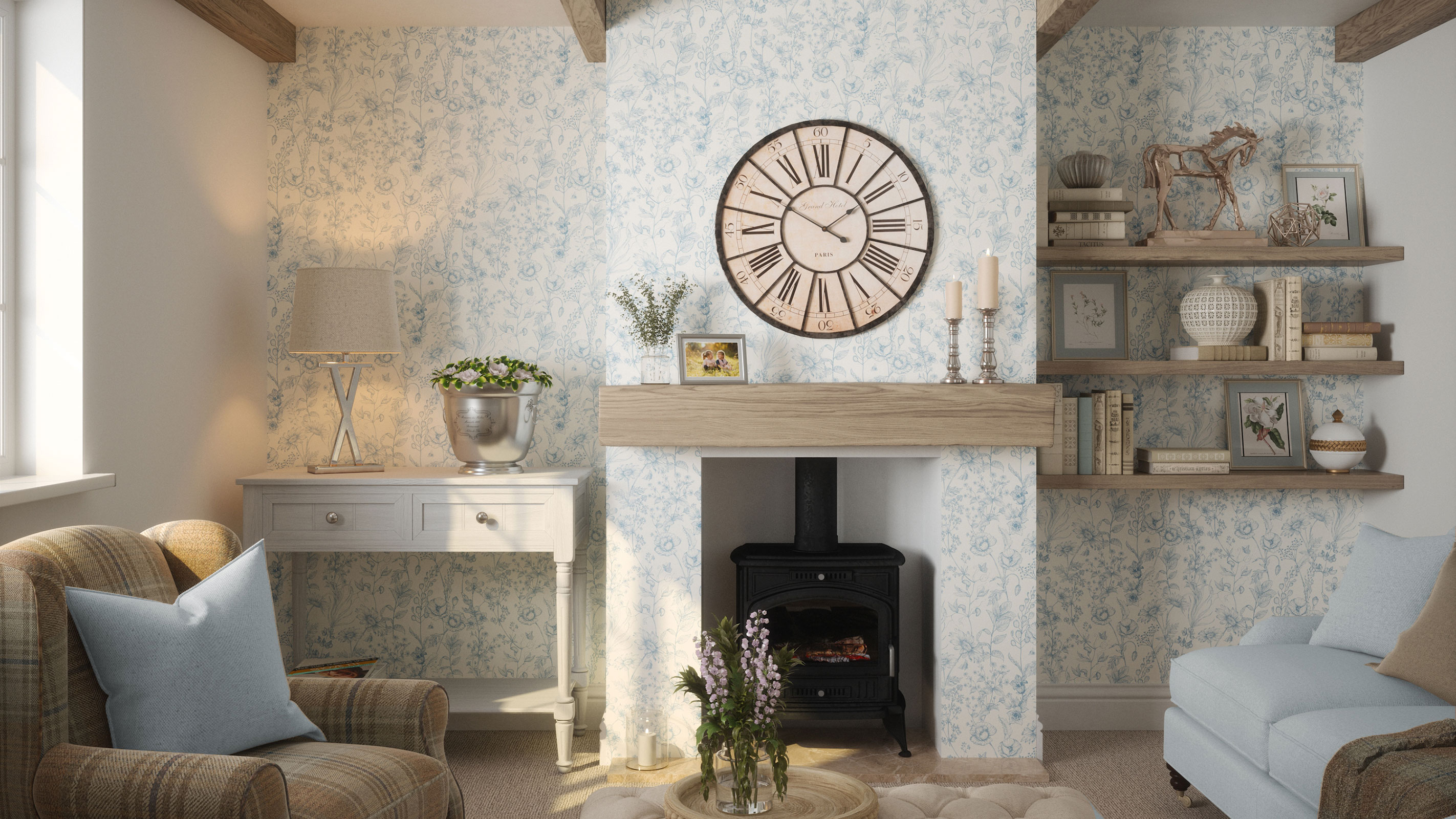
Try these colours for your living room designs
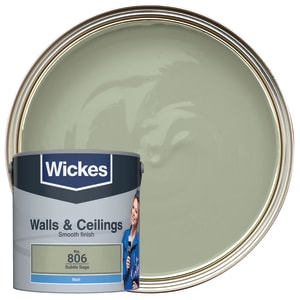
A soft sage green can work in living rooms of all shapes and sizes
5. Pick flooring that is practical but elevates the overall design
Although your living room flooring ideas will heavily influence the overall look of the room, they will obviously also need to be considered on a practical level. There are, in fact, various flooring materials that are suitable for this room.
When it comes to picking the best carpet for living rooms, "wool floor coverings are ideal for living rooms as they are hardwearing and soft underfoot," says Jon Flannigan, category director at Headlam plc. "As a natural fibre, wool is also breathable, it will be warm in the winter but remain cool in the summer.
Some other types of natural flooring also work well in living rooms.
"Sisal, seagrass and mountain grass all have smooth fibres and offer a crisp, neat effect," says Jon. "Coir is suitable for those seeking a rougher, more casual effect. Jute is the softest of the natural floor coverings, giving a comfortable feel underfoot. However it is less hardwearing and more absorbent."
“Choosing the right living room flooring can make or break your room," says Johanna Constantinou, brand and communications director at Tapi. "Nailing that perfect mix between style and comfort can turn your space into the ultimate place to relax and unwind after a long day.
"For many, carpet is understandably the number one choice of flooring for a living room, and as these areas generally see lower traffic, you can invest in a thick, luxurious carpet without the worry that it will get trodden down or marked as much as it might in a hallway or on stairs.
"However, the one downside to carpet is furniture marks being left around the room should you change the layout and positioning," continues Johanna. "Although there are preventative measures such as placing furniture coasters under your sofa, firmer carpet types are less likely to show dents, such as twist pile carpets.”
Of course wooden flooring is also suitable for the living room, being hardwearing and very beautiful. Placing a large rug on top of wood flooring in areas where comfort is paramount is a good idea.
Don't forget the influence the colour of your flooring will have on the room either.
“Shades of blue evoke a calm feeling. It is an uplifting colour and an ideal choice for the living room as its tranquil qualities create a relaxing atmosphere within the home," says Sarah Jenkinson, product manager at Headlam plc. "Reminiscent of the beauty of nature with the sea and sky, the shades that sit within the blue colour palette are best placed in areas where we wish to wind down.
"Partner this with sandy-coloured shades to breathe life into the room and create the illusion of space," continues Sarah. "Choosing a lighter or neutral flooring options helps to create a cohesive room scheme. Muted tones will instantly uplift the space whilst remaining timeless, creating a welcoming feel. These two are a well-loved pairing that’s perfect for those neutral-loving homeowners who search for a serene home environment or those who want to introduce just a hint of colour.“
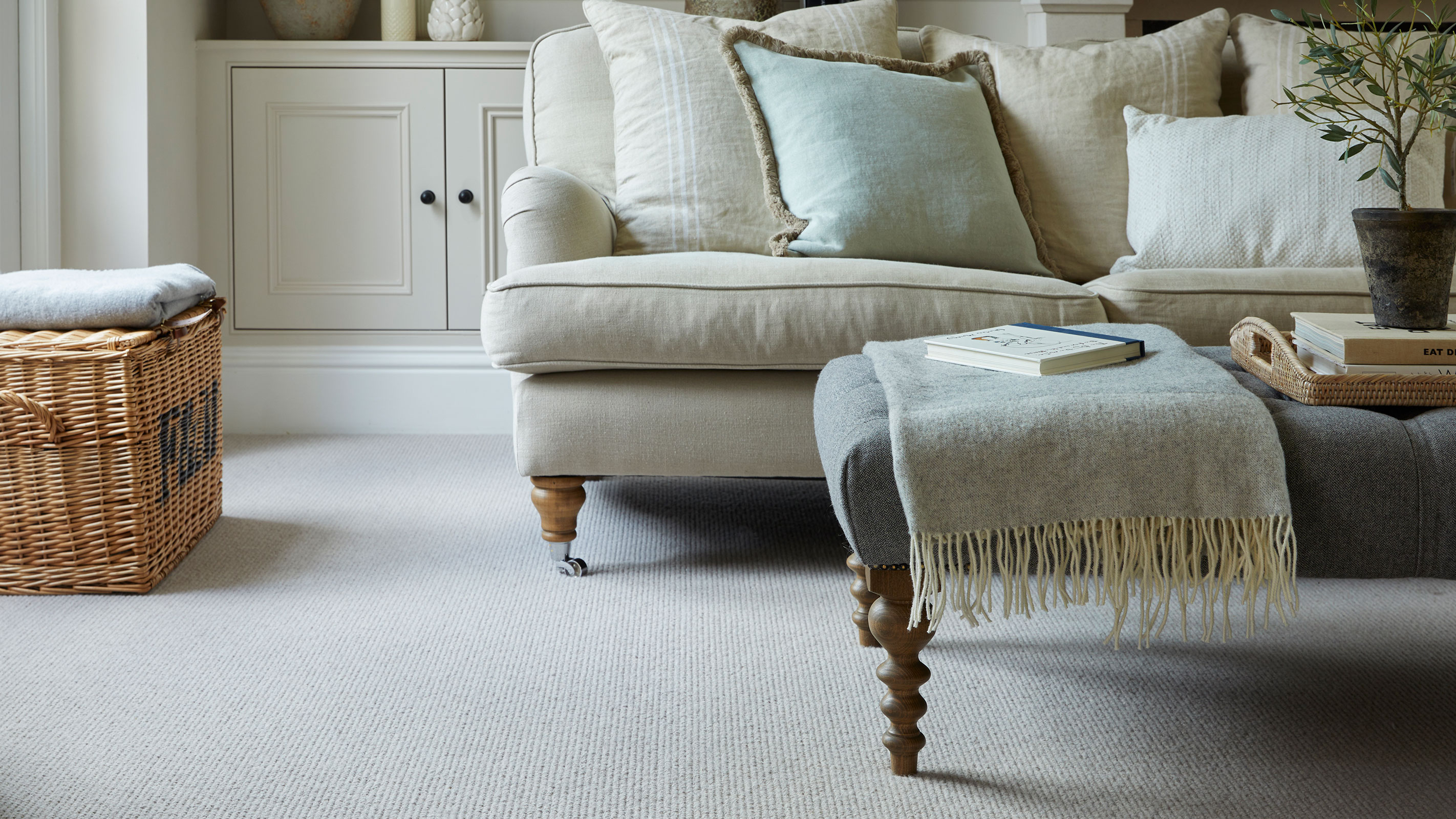
6. Furniture and storage are the finishing touches to your living room design
For any room, your selection of furniture, particularly your living room storage ideas will all help to ensure the space is practical, stylish and ensures clutter feels as if it's kept under control.
“The living room is often considered the heart and soul of the home," says Cari Bateman, design consultant at Neville Johnson. "As well as being somewhere to relax as a family or entertain with friends, it’s a room that also needs to be functional for everyday life. This includes providing a space to store belongings, whether that’s your book collection or spare blankets.
“There are plenty of ways to incorporate living room storage units that not only look effortlessly stylish but also provide you with plenty of cupboards, drawers, and shelves," continues Cari. "A sumptuous storage cabinet helps hide various things that commonly clutter up the lounge, from books and board games to electronics and candles. There’s also the option of a fitted living room storage cabinet with doors or even a whole wall of units.
“Many homes have alcoves on either side of a fireplace or chimney breast. These are brilliant places for bookcases or fitted shelving units, including those with doors that effortlessly hide any clutter you don’t want to see. A modular shelving unit is a brilliant option, too. Not only will it provide you with ample space to store your belongings, but you’ll be able to display ornaments, books, and decorative items stylishly."
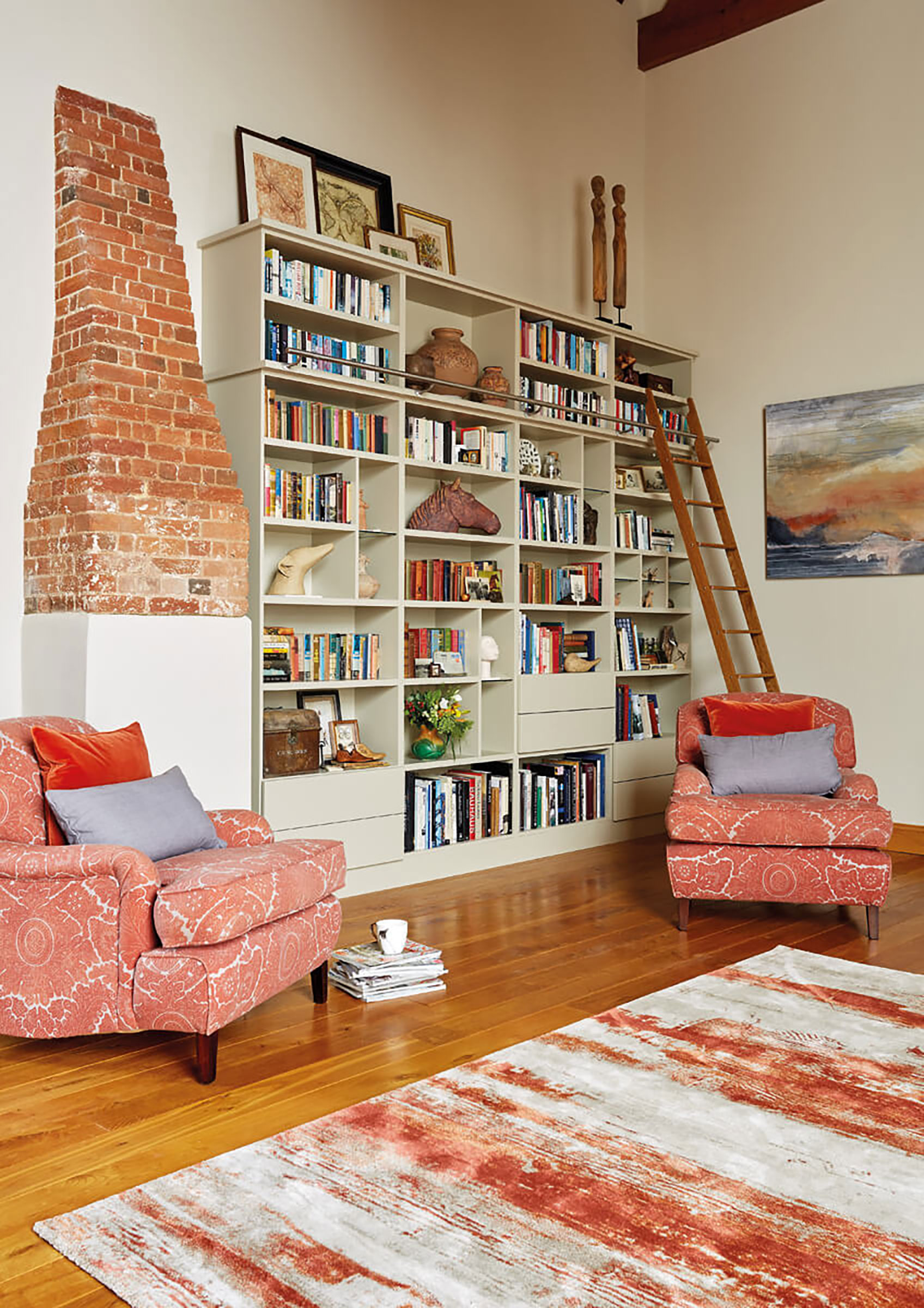
Fitted vs freestanding living room storage
"Storage is something that we all need in ample amounts, so it's always important to consider choosing bespoke, built-in joinery over freestanding designs," recommends Emma Deterding. "Going for a bespoke, built-in design will not only allow you to make your mark on the property in terms of design and colour, but you can also maximise the potential of spaces such as alcoves, recesses and even bay windows. You'll be able to keep the room clear and clutter free with ease, whilst also being able to display your most prized possessions without losing vast amounts of an already small space."
Opting for a bespoke option can also be invaluable, regardless of the size of your living room notes Emma.
"Just like in big, open-plan spaces, you can really play with size and scale even in the most compact of living rooms. Creating built-in, wall-to-ceiling shelving and cabinetry will add a sense of grandeur and height, whilst allowing you to display personal touches, decorative items and even plants."
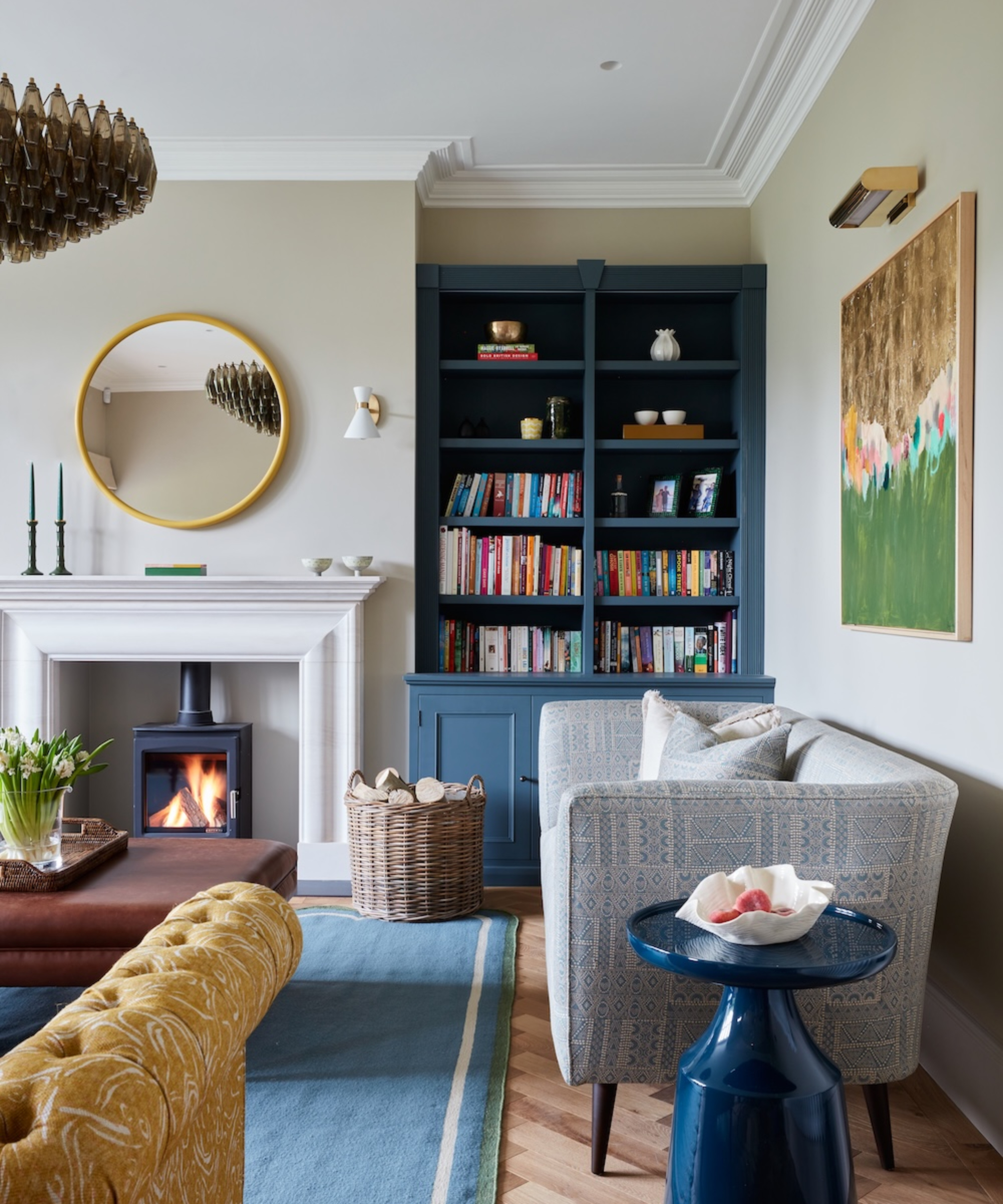
Choosing the right furniture
Picking the right furniture for your living room design will be dictated by the available space and your personal preferences, or, perhaps you need your living room design to give you a multi-functional space.
It's common nowadays with family members working from home and open plan living to find more than relaxation taking place in the living room, and so as well as choosing the right furniture and storage, it's also important that you plan for these additional needs well in advance as it will probably have a big effect on things such as how many electrical sockets you require, your lighting scheme and even if you can consider living room fireplace ideas.
Once you know exactly what is going to be happening in your living room you can approach its design in a more considered way that means you won't have clutter building up in the corners, cables snaking all over the floor or too little space for your chosen sofas and side tables.
Emma Deterding shares some additional tips for choosing the right pieces of furniture to complete your living room design.
"A corner sofa is often the go-to choice for a smaller space as people feel it provides cosy seating that doesn't take up too much room, however, going for a 3-seat and 2-seat sofa can be just as effective, providing enough seats whilst giving the illusion of space," she says.
"Furniture pieces that are raised on legs will also help to create the illusion of space, helping to keep the floor clear. And, if you are creating a multi-functional living room, there are also many pieces on the market nowadays, suited to this concept," she adds.
"From coffee tables with lifting tops that allow you to eat dinner or work from home with ease, to clever footstools and ottomans with built-in storage and even pull-out guest beds, you can really make sure your living room is designed for your lifestyle."
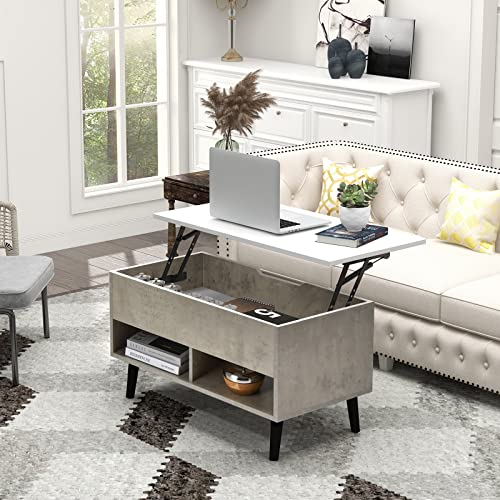
This coffee table hides a lift up desk section with storage below, perfect if you need to occasionally work in your living room
FAQs
How can I make a living room feel more cosy?
If there is one room you want to feel welcoming, warm and snug, it has to be the living room – and there are several design tricks to ensure your space feels cosy.
Firstly, introduce a focal point or two. While log burner ideas are guaranteed to add instant character and charm to the room, those without a chimney need not despair. Large pieces of eye-catching artwork or a picture wall, a stunning picture window framing a view, a feature wall or even a stand-out piece of furniture can all become focal points that ensure the room doesn't feel bland.
Comfy furniture such as squashy chairs and sofas that beg to be sat on, something soft underfoot, the soft glow of side lamps and lots of different textures will also inject a cosy feel.
"With colour, opt for warmer, deeper and bolder tones," says Emma Deterding, "as these will help to make the space feel warmer. Lighting should be used strategically, with lower-level lighting such as floor and table lamps to create pools of warmth, making the space feel even more inviting.”
How can I use colour to make a small living room feel bigger?
"When it comes to decorating your living room, there are many things you can do to help make the space feel bigger than it is - which is especially key if space is at a premium, says Anna Hill, brand director and colour consultant at Fenwick & Tilbrook.
"If your living room is small and lacking natural light it may be best to just accept it and embrace a cosier scheme. That said, many people crave lightness and brightness in their home so an off white which has a pink, taupe or peach undertone will be warming, light and help to make the room feel bigger. Light, cool colours recede so opting for a cool tone on the walls will make them appear further away – our number 13. Dolphin is a great option for this. It’s a pale grey with cool blue undertones.
"Using slightly darker colours can also create an illusion," adds Anna, "tricking the eye into thinking that a wall is further away so if your room is long and thin, paint a dark colour at either end to draw the eye through the room. It'll help make the room appear less rectangular. Another great tip is to take the same colour from the walls down onto the skirting board. This gives the appearance of a higher ceiling as the colour continues down from the ceiling to floor."
How can I make my living room feel more luxurious?
"The key to making a living room feel more luxurious is all in the details," says Kunal Trehan. "High-quality materials, oversized bespoke furniture, and a harmonious palette, will all create a luxury feel. Opt for sumptuous fabrics, such as silk, cashmere, or mohair, and incorporate metallic accents in brass or bronze for a touch of opulence.
"Statement lighting, curated art, and well-placed decorative objects elevate the aesthetic," he adds, "while symmetry if possible and proportion ensure an effortlessly refined look."
Keen to create a living room design that's more contemporary? Check out our modern living room ideas and for something even more cutting-edge, try these minimalist living room ideas for a sleek and serene space.
Get the Homebuilding & Renovating Newsletter
Bring your dream home to life with expert advice, how to guides and design inspiration. Sign up for our newsletter and get two free tickets to a Homebuilding & Renovating Show near you.

Sarah is Homebuilding & Renovating’s Assistant Editor and joined the team in 2024. An established homes and interiors writer, Sarah has renovated and extended a number of properties, including a listing building and renovation project that featured on Grand Designs. Although she said she would never buy a listed property again, she has recently purchased a Grade II listed apartment. As it had already been professionally renovated, she has instead set her sights on tackling some changes to improve the building’s energy efficiency, as well as adding some personal touches to the interior.
